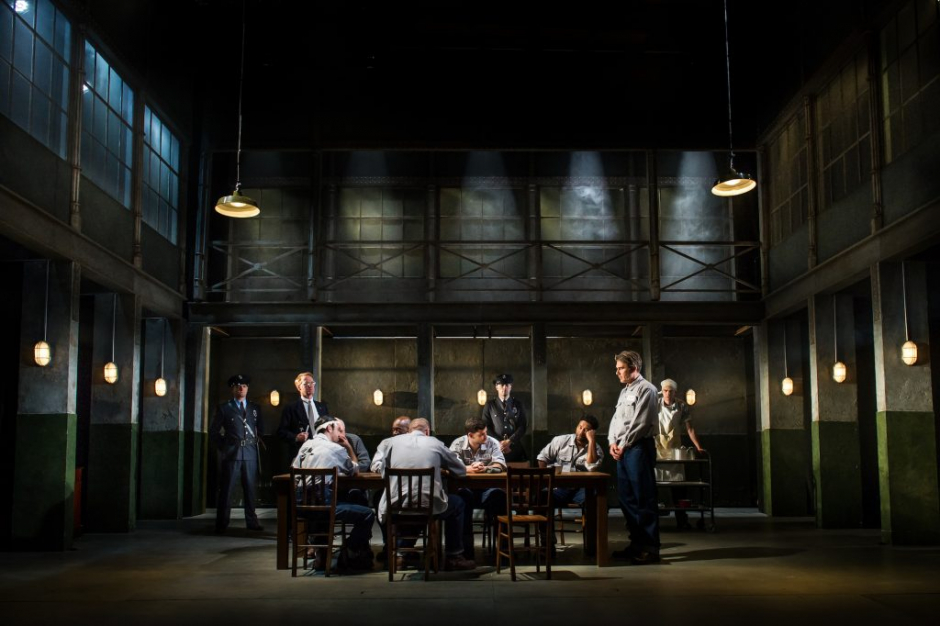The Shawshank Redemption, The Lowry, May 5 2016; adapted by Owen O’Neill and Dave Johns, directed by David Esbjornson.
Hope springs eternal. Any of Stephen King’s constant readers (as the author himself likes to call them) will recognise that three-word phrase. It is the mantra by which Andy Dufresne, protagonist of King’s 1982 novella Rita Hayworth and the Shawshank Redemption, lives his life. It is the motto of his story. Film buffs may also be familiar with the phrase because it was used as the tagline to the 1994 movie The Shawshank Redemption, directed and produced by Frank Darabont. After a slow start, the film version of King’s novella went on to become a regular in ‘best films of all time’ shortlists and one of the most regularly rented DVDs of all time. Viewers seemed to connect with this tale of eternal hope.
How hopeful can you be, though, when, 22 years after the film and 34 years after the novella, a new version of this much loved work of fiction turns up on a theatre stage in Salford? In the age of the remake and revisit, where new versions of old classics seem more prevalent than originals, could we hold out any hope that this latest adaptation of fiction’s most adapted author would live up to its predecessors?
If you based your predictions on the cast, then early signs would certainly be hopeful. With Paul Nicholls as Andy Dufresne, Bad Girls and Coronation Street star Jack Elllis as Warden Stammas, and television regular Ben Onwukwe as Red, this was as close to star-studded as a theatre show in the North West of England gets. Each of the actors mentioned put in a stellar performance, with Nicholls in particular getting the monkey of his much-remembered Eastenders role off his back. While nobody would claim that the standards were up to those of Tim Robbins and Morgan Freeman, it’s fair to say that they did more than enough to leave you hopeful of a good evening. And they were backed up by an equally impressive cast across the board.
So performances definitely weren’t going to be the downfall of this remake. But what about the way they retold the story? Fans of both the film and the novella will have noticed that the scriptwriters kept closer to the written text than the big screen version, only straying when scenes that would have required a set change were adapted to fit inside the walls of the prison. Most obvious among these changes was the scene that dealt with the institutionalised Brooksie’s (Andrew Boyer) suicide. Even with these alterations however, the scene was handled with the pathos and tenderness expected. It was a sign of just how successful this adaptation was.
Perhaps the best example that director David Esbjornson and his crew had managed to avoid the many pitfalls of remaking a classic was that there were only a couple of occasions when the film was pushed to the forefront of the audience’s mind. In a less successful version, there would be many remembered moments that were better in the film. But this was rarely the case. And two of the most iconic scenes: when Andy bribes some beers from the prison guards and gives them to his friends, and when he tells his sexual attacker that he will bite anything that he puts in his mouth were as powerful and nuanced as any versions that had come before. Only the escape scene didn’t live up to expectations, but it’s much more difficult to emulate actor’s crawling through a sewage-pipe and emerging into the pouring rain when you can’t use special effects.
And in the end, this play wasn’t about the flashier, Hollywood aspects of the story. It was about the emotion. It was about hope. And in the pared back and near flawless performances, that story of hope took centre stage. There can’t be many people who aren’t already fans of the story, but this version would work wonders for aficionados and newcomers alike.

